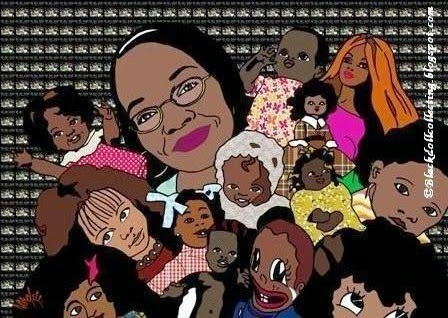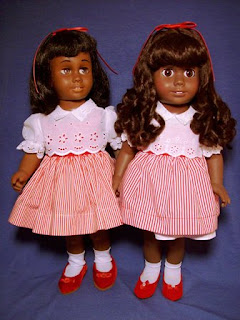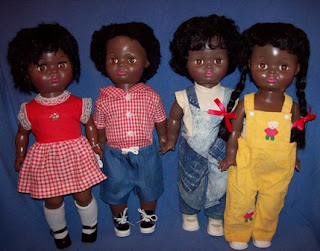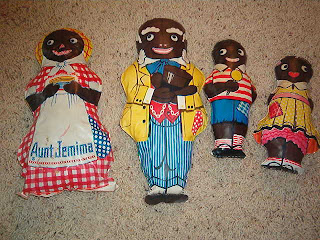Before concluding the Moments in Black Doll History series, knowing that so much information has not been shared, I wanted to extend several "hats off" to peope who play or have played an important role in black-doll history.
- To doll artists and manufacturers who currently craft or mass produce black dolls -- keep doing what you are doing. You are creating Black-doll history -- hats off to you!
- To doll museums and other places of exhibit where black dolls are showcased for the community -- hats off to you!
- To those who share their dolls with the community in the aforementioned exhibits -- hats off to you!
- To fellow collectors who share my passion for collecting dolls in general and to those who specifically, like me, are passionate about black dolls -- hats off to you (because I know you get it!).
- To those who came before me in writing books devoted solely to black dolls and to those who have included information on black dolls in their works -- hats off to you (because fellow enthusiasts hunger for black-doll information almost as much as they desire black dolls).
- To doll publications that include information about black dolls in their periodicals, and specifically to those who have published my articles (Doll-E-Gram, Doll Castle News, Dolls Magazine, Contemporary Doll Collector, UFDC Doll News, Doll Showcase Magazine) -- hats off to you. Keep the articles coming!
- LaVerne E. Hall -- Former publisher of Doll-E-Gram, a publication designed chiefly to honor black-doll artists and their dolls
- Barbara Whiteman -- Founder and Executive Director of the Philadelphia Doll Museum and co-host of the International Doll Show and Sale (usually held during Memorial Day weekend in Philadelphia, PA)
- Myla Perkins -- whose first black-doll reference book was the most comprehensive book on black dolls ever published, which opened my eyes to the wonderful world of vintage black-doll collecting
- WLBD -- Thanks for sharing the passion with me online since January 12, 2001.
- To all the Leo Mosses of the world past and present (grannies, mothers, males, females, children, self-taught or trained artists) -- anyone who has made black dolls, taught the art of black-dollmaking, or otherwise contributed to this art -- thank you!
A Link You Might Enjoy:
Myla Perkins in 1975 (former educator, collector, author) sharing her dolls with school children
dbg


















